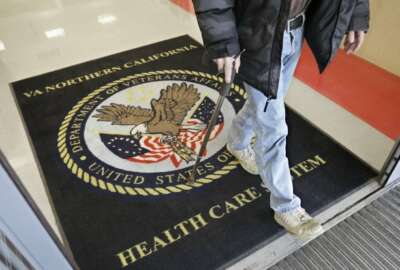All things considered, the state of federal customer experience is looking better this year.
Using his organization’s in-house CX Index of quality and customer loyalty, Rick Parrish, vice president and principal analyst at Forrester Research, said federal agencies earned a new average high score in 2020 after three years of statistically little change. The National Park Service, Medicaid and U.S. Citizenship and Immigration Services had their best-ever scores this year, while the IRS was back on par with its high score and the Bureau of Consular Affairs trailed closely behind its best score. And in total 14 out of 15 agencies measured had scores at least as good as before 2020.
But the federal government is still weak and uneven compared to private industry, he cautioned.
“For the last several years, pretty much all of the attention that federal agencies and their partners have been giving to CX has been around digital CX. And despite that, digital still lags,” he said at ACT-IAC’s CX Summit 2020 this week.
When grouping users’ customer experience channels into three “buckets” – physical, digital and a combination of the two – Parrish said the highest scores for ease and effectiveness were in the physical customer experience realm, followed by the combination of physical and digital. It’s why Parrish said agencies need to focus on what matters most: Communicate using plain language, answer all of the customer’s questions, resolving problems the first time a customer contacts them, and offer payment options to meet the customer’s needs.
The two-day virtual event brought together agency and industry leaders in using government technical infrastructure to guide customer experience practices. Many speakers detailed how the pandemic gave their agencies a chance to make long-talked about improvements to customer experience.
Barbara Morton, deputy chief veterans experience officer at the Department of Veterans Affairs, said veterans had expectations for personal safety when coming to Veterans Health Administration medical centers. For that, VA accelerated its ongoing effort to sift call center messages through its tier system and get COVID-19-related questions to the right place.
“One of the first things that Veterans Health Administration came to us during the height of the pandemic and asked for was ‘what are veterans going to need to know or see to feel safe to come into a medical center if they have to be in person?’” she said.
The pandemic also affected how VA collected customer and employee feedback. The methodology, using a human-centered design and real-time customer experience feedback, was already several years in the making, Morton said.
Part of improving CX means giving customers a clear course of action or next steps to take for their problem to get solved or their needs met. Perhaps few understand this better than customers trying to get immigration paperwork processed.
Courtney Winship, Digital Services division chief at USCIS, said they see filings tend to uptick once customers begin receiving periodic direct communications from the agency.
“Some of the steps we’ve taken are things like, when it comes to your green card if it’s going to expire in the next six months, we have been sending proactive notifications via email and text to let them know that their time is about to expire so if they consider filing for that benefit. And we continue to do that over a period of time,” she said. And considering those customers tend to be with USCIS for years or even decades, Winship said that “if you have something pending with us we do send you a notice just to say also ‘we know it’s been a while, we have your case, we’re still working on it,’ and just try to build up that trust with the public, right, so being as transparent and proactive as we possibly can be.”
Copyright
© 2024 Federal News Network. All rights reserved. This website is not intended for users located within the European Economic Area.

